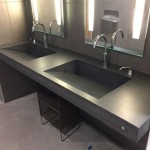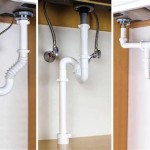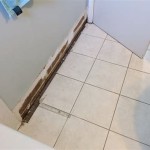Selecting the Ideal 60-Inch Single Sink Bathroom Vanity
The selection of bathroom vanities is a significant aspect of bathroom renovation or construction. Among the various sizes available, a 60-inch single sink vanity presents a compelling option for many homeowners. This size offers a balance between counter space, storage capacity, and overall footprint, making it suitable for medium to large-sized bathrooms. The following explores the key considerations when selecting a 60-inch single sink bathroom vanity, encompassing aspects of design, functionality, materials, and installation.
A 60-inch vanity provides ample surface area for daily grooming routines and storage. Smaller vanities often lack sufficient countertop space, leading to clutter and inconvenience. Larger vanities may overwhelm smaller bathrooms, compromising the overall flow and aesthetics of the space. A 60-inch vanity strikes a reasonable compromise, offering a generous workspace without dominating the room. This size also allows for a larger sink basin, enhancing functionality and ease of use.
Before embarking on the purchasing process, it is imperative to accurately measure the available space in the bathroom. This measurement should include not only the width but also the depth and height clearances. Consider any existing plumbing fixtures, door swings, and other obstructions that might affect the placement of the vanity. Adhering to these measurements will ensure a seamless installation and prevent unforeseen issues.
Design and Style Considerations
Bathroom vanities are available in a multitude of designs and styles, ranging from traditional to contemporary. The design selection should complement the existing aesthetic of the bathroom and reflect the homeowner's personal preferences. Consider the overall color palette, architectural details, and the style of other fixtures, such as the toilet and shower. A cohesive design creates a harmonious and visually appealing space. The design aspect also includes the door and drawer configurations, the type of hardware used, and the overall shape of the vanity itself.
Traditional vanities often feature ornate details, raised panel doors, and furniture-style legs. These vanities evoke a sense of elegance and sophistication, and they are often finished in rich wood tones or antique white. Contemporary vanities, on the other hand, typically showcase clean lines, minimalist designs, and sleek hardware. These vanities are often finished in neutral colors or bold, modern hues. Transitional vanities bridge the gap between traditional and contemporary styles, combining elements of both to create a versatile and timeless look.
The choice of countertop material also plays a crucial role in the overall design. Common countertop materials include granite, quartz, marble, and solid surface materials. Granite and marble offer natural beauty and durability, but they require periodic sealing to prevent staining. Quartz is a manufactured stone that is non-porous and stain-resistant, making it a low-maintenance option. Solid surface materials are also non-porous and seamless, offering a clean and contemporary look. The countertop material should be chosen based on its aesthetics, durability, and maintenance requirements.
Vanity color is an important consideration, impacting the visual appeal and ambiance of the bathroom. White vanities provide a classic and timeless look, creating a bright and airy atmosphere. Dark wood vanities offer a sense of warmth and sophistication, while gray vanities provide a neutral and contemporary backdrop. The color should complement the other elements in the bathroom, such as the wall color, flooring, and fixtures.
Functionality and Storage Solutions
Beyond aesthetics, the functionality of a 60-inch single sink vanity is paramount. The vanity should provide ample storage space for toiletries, towels, and other bathroom essentials. Consider the number of drawers and cabinets, as well as their size and configuration. Drawers are ideal for storing smaller items, such as makeup and personal care products, while cabinets are better suited for larger items, such as towels and cleaning supplies. Interior organizers, such as drawer dividers and adjustable shelves, can further enhance the functionality of the vanity.
The sink basin itself should be chosen carefully, considering its size, shape, and material. Undermount sinks offer a seamless and easy-to-clean surface, while vessel sinks add a touch of elegance and sophistication. The sink material should be durable and resistant to staining and scratching. Common sink materials include porcelain, ceramic, stainless steel, and cast iron. The depth of the sink is an important factor, impacting splash control and ease of use. A deeper sink is generally preferred for preventing splashing, while a shallower sink may be more accessible for individuals with mobility issues.
The height of the vanity is another crucial consideration. Standard vanity heights range from 30 to 36 inches. A taller vanity may be more comfortable for taller individuals, while a shorter vanity may be more accessible for children or individuals with mobility limitations. Wall-mounted vanities, also known as floating vanities, offer a unique and modern look, and they can be installed at a custom height. This provides flexibility in accommodating individual needs and preferences.
Consider the plumbing configuration of the vanity. Ensure that the drain and water supply lines are compatible with the existing plumbing in the bathroom. A professional plumber should be consulted to ensure proper installation and prevent leaks or other plumbing issues. The faucet selection should also complement the sink and vanity design. Choose a faucet that is both aesthetically pleasing and functional, with features such as a single-handle design, pull-down sprayer, or touchless operation. The faucet finish should match the other hardware in the bathroom, such as the cabinet pulls and towel bars.
Materials and Durability
The materials used in the construction of a 60-inch single sink vanity play a critical role in its durability and longevity. Solid wood is a premium material that offers exceptional strength and beauty. However, solid wood vanities can be expensive and require proper sealing to prevent moisture damage. Plywood is a more affordable alternative that is still durable and resistant to warping. MDF (medium-density fiberboard) is another common material that is smooth and easy to paint, but it is less resistant to moisture than solid wood or plywood.
The finish of the vanity is also an important factor. A high-quality finish will protect the vanity from moisture, scratches, and stains. Common finish options include paint, stain, and lacquer. Painted finishes offer a wide range of color options, while stained finishes showcase the natural grain of the wood. Lacquer finishes provide a durable and glossy surface. The finish should be applied evenly and smoothly, without any drips or imperfections.
The hardware used on the vanity, such as the drawer pulls and hinges, should be made of durable materials, such as stainless steel or brass. Avoid using plastic or flimsy hardware, as it is more likely to break or corrode over time. The hinges should be adjustable, allowing for precise alignment of the doors and drawers. The drawer slides should be smooth and quiet, providing easy access to the contents of the drawers.
The countertop material should also be chosen with durability in mind. Granite and quartz are both highly durable and resistant to scratches and stains. However, granite is porous and requires periodic sealing, while quartz is non-porous and requires less maintenance. Solid surface materials are also durable and easy to clean, but they may be more prone to scratching than granite or quartz. The sink material should also be resistant to staining and scratching. Porcelain and ceramic are both durable and affordable options, while stainless steel and cast iron are more resistant to impact damage.
Proper installation is crucial for ensuring the longevity of the vanity. The vanity should be installed level and securely attached to the wall. The plumbing connections should be tight and leak-free. A professional plumber can ensure that the vanity is installed correctly and that all plumbing connections are properly sealed. Regular cleaning and maintenance will also help to prolong the life of the vanity. Wipe down the surfaces regularly with a damp cloth and avoid using harsh chemicals or abrasive cleaners. Inspect the plumbing connections periodically for leaks and address any issues promptly.

60 Inch Single Sink Bathroom Vanity In White Washed Walnut

60 Inch Single Sink Country Oak Bathroom Vanity Custom Top

Ari Kitchen And Bath Na 60 In Single Vanity Gray With Marble Top Carrara White Farmhouse Basin Akb Gry The Home Depot

60 Inch Single Sink White Bathroom Vanity James Martin

60 Chicago Whitewashed Walnut Single Sink Bathroom Vanity
Thomson Bath Vanity By Studio Bathe In Gray Costco

60 Inch Large Modern Single Sink Bathroom Vanity Custom Top

Sudio Thompson 60 In W X 22 D Bath Vanity White With Engineered Stone Top Carrara Sink 60w S The Home Depot

Kb Authority Specializes In Bathroom Sink Vanities Shower Doors Kitchen Faucets And More
Kb Authority Specializes In Bathroom Sink Vanities Shower Doors Kitchen Faucets And More
Related Posts







